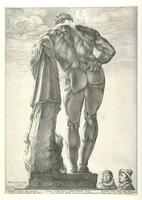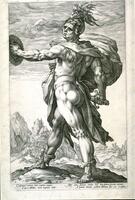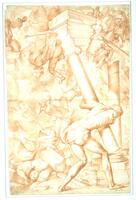<!--
/* Font Definitions */
@font-face
{font-family:"MS Mincho";
panose-1:2 2 6 9 4 2 5 8 3 4;
mso-font-alt:"MS 明朝";
mso-font-charset:128;
mso-generic-font-family:modern;
mso-font-pitch:fixed;
mso-font-signature:-536870145 1791491579 134217746 0 131231 0;}
@font-face
{font-family:"Cambria Math";
panose-1:2 4 5 3 5 4 6 3 2 4;
mso-font-charset:0;
mso-generic-font-family:roman;
mso-font-pitch:variable;
mso-font-signature:3 0 0 0 1 0;}
@font-face
{font-family:Cambria;
panose-1:2 4 5 3 5 4 6 3 2 4;
mso-font-charset:0;
mso-generic-font-family:roman;
mso-font-pitch:variable;
mso-font-signature:-536870145 1073743103 0 0 415 0;}
@font-face
{font-family:"\@MS Mincho";
panose-1:2 2 6 9 4 2 5 8 3 4;
mso-font-charset:128;
mso-generic-font-family:modern;
mso-font-pitch:fixed;
mso-font-signature:-536870145 1791491579 134217746 0 131231 0;}
/* Style Definitions */
p.MsoNormal, li.MsoNormal, div.MsoNormal
{mso-style-unhide:no;
mso-style-qformat:yes;
mso-style-parent:"";
margin-top:0in;
margin-right:0in;
margin-bottom:10.0pt;
margin-left:0in;
mso-pagination:widow-orphan;
font-size:12.0pt;
font-family:"Cambria",serif;
mso-ascii-font-family:Cambria;
mso-ascii-theme-font:minor-latin;
mso-fareast-font-family:"MS Mincho";
mso-fareast-theme-font:minor-fareast;
mso-hansi-font-family:Cambria;
mso-hansi-theme-font:minor-latin;
mso-bidi-font-family:"Times New Roman";
mso-bidi-theme-font:minor-bidi;
mso-fareast-language:JA;}
.MsoChpDefault
{mso-style-type:export-only;
mso-default-props:yes;
font-size:10.0pt;
mso-ansi-font-size:10.0pt;
mso-bidi-font-size:10.0pt;
font-family:"Cambria",serif;
mso-ascii-font-family:Cambria;
mso-ascii-theme-font:minor-latin;
mso-fareast-font-family:"MS Mincho";
mso-fareast-theme-font:minor-fareast;
mso-hansi-font-family:Cambria;
mso-hansi-theme-font:minor-latin;
mso-bidi-font-family:"Times New Roman";
mso-bidi-theme-font:minor-bidi;
mso-fareast-language:JA;}
.MsoPapDefault
{mso-style-type:export-only;
margin-bottom:10.0pt;}
@page WordSection1
{size:8.5in 11.0in;
margin:1.0in 1.0in 1.0in 1.0in;
mso-header-margin:.5in;
mso-footer-margin:.5in;
mso-paper-source:0;}
div.WordSection1
{page:WordSection1;}
-->
Fall
- 1956/1.78 - Hercules, Albrecht Dürer, circa 1498; 12 7/16 in x 8 11/16 in
- 1994/2.13 - The Farnese Hercules, Hendrick Goltzius, circa 1592; 16 7/16 in. x 11 5/8 in.
Winter
- 1989/1.61 - Marcus Calphurnius Flama (Plate 8 from "Roman Heroes"), Hendrick Goltzius, 1586; 15 13/16 in. x 10 5/8 in.
- 1960/2.83 - Samson's Vengeance, Unknown artist, 2nd half of 16th century; 26 1/4 in x 16 15/16 in
4 Items in this Learning Collection
Collection Object
Collection Object
Collection Object
Collection Object
Copyright
All Rights Reserved
()
Hercules
Accession Number
1956/1.78
Title
Hercules
Artist(s)
Albrecht Dürer
Object Creation Date
circa 1498
Medium & Support
engraving on paper
Dimensions
12 1/2 x 8 3/4 in. (31.59 x 22.07 cm);22 1/8 x 18 1/8 in. (56.2 x 46.04 cm)
Credit Line
Gift of Jean Paul Slusser
Label copy
Gallery Rotation Spring/Summer 2012
Albrecht Dürer
Germany, 1471–1528
Hercules
circa 1498
Engraving
Gift of Jean Paul Slusser, 1956/1.78
Like his Italian contemporaries, Dürer used the stories of the Greek and Roman gods to create moralizing allegories. He titled this print, made shortly after he returned from traveling in Italy, Hercules after the most celebrated hero of classical mythology. The son of Jupiter (Zeus) and a mortal woman, Hercules was endowed with near godlike strength, courage, and fortitude, and was known for his adventures, trials, and labors. It is not certain which of these is depicted in this print, though it is often interpreted as Hercules at the crossroads, choosing between the paths of virtue and vice. A satyr in the bottom left corner embraces a nude female figure (understood to be Vice), while another woman (Virtue) stands, brandishing a weapon. Hercules is situated between them, wielding his trademark club. It is not entirely clear whether he is aiding Virtue in her cause or seeking to obstruct her blows. Viewers may have enjoyed puzzling out the subject, but regardless of whether they recognized it, the artistic virtuosity of the print would have been appreciated.
Subject matter
Dürer combines myth, in the figures of Hercules and the satyr, with allegory, the seated woman possibly a figure of Vice and the standing woman representing Virtue. The interpretation of the scene remains enigmatic.
Physical Description
A nude man seen from behind raises a staff to ward off the blow of a standing female figure, also with a staff. The woman's swing is directed to two seated figures at the lower left: a nude woman and a satyr. In the distance is an elaborate gated city and landscape.
Primary Object Classification
Print
Primary Object Type
intaglio print
Collection Area
Western
Rights
If you are interested in using an image for a publication, please visit http://umma.umich.edu/request-image for more information and to fill out the online Image Rights and Reproductions Request Form.
Keywords
allegories (document genre)
children (people by age group)
engravings (prints)
fighting
forests (cultural landscapes)
intaglio printing
trees
1956/1.78
Title
Hercules
Artist(s)
Albrecht Dürer
Object Creation Date
circa 1498
Medium & Support
engraving on paper
Dimensions
12 1/2 x 8 3/4 in. (31.59 x 22.07 cm);22 1/8 x 18 1/8 in. (56.2 x 46.04 cm)
Credit Line
Gift of Jean Paul Slusser
Label copy
Gallery Rotation Spring/Summer 2012
Albrecht Dürer
Germany, 1471–1528
Hercules
circa 1498
Engraving
Gift of Jean Paul Slusser, 1956/1.78
Like his Italian contemporaries, Dürer used the stories of the Greek and Roman gods to create moralizing allegories. He titled this print, made shortly after he returned from traveling in Italy, Hercules after the most celebrated hero of classical mythology. The son of Jupiter (Zeus) and a mortal woman, Hercules was endowed with near godlike strength, courage, and fortitude, and was known for his adventures, trials, and labors. It is not certain which of these is depicted in this print, though it is often interpreted as Hercules at the crossroads, choosing between the paths of virtue and vice. A satyr in the bottom left corner embraces a nude female figure (understood to be Vice), while another woman (Virtue) stands, brandishing a weapon. Hercules is situated between them, wielding his trademark club. It is not entirely clear whether he is aiding Virtue in her cause or seeking to obstruct her blows. Viewers may have enjoyed puzzling out the subject, but regardless of whether they recognized it, the artistic virtuosity of the print would have been appreciated.
Subject matter
Dürer combines myth, in the figures of Hercules and the satyr, with allegory, the seated woman possibly a figure of Vice and the standing woman representing Virtue. The interpretation of the scene remains enigmatic.
Physical Description
A nude man seen from behind raises a staff to ward off the blow of a standing female figure, also with a staff. The woman's swing is directed to two seated figures at the lower left: a nude woman and a satyr. In the distance is an elaborate gated city and landscape.
Primary Object Classification
Primary Object Type
intaglio print
Collection Area
Western
Rights
If you are interested in using an image for a publication, please visit http://umma.umich.edu/request-image for more information and to fill out the online Image Rights and Reproductions Request Form.
Keywords
allegories (document genre)
children (people by age group)
engravings (prints)
fighting
forests (cultural landscapes)
intaglio printing
trees




